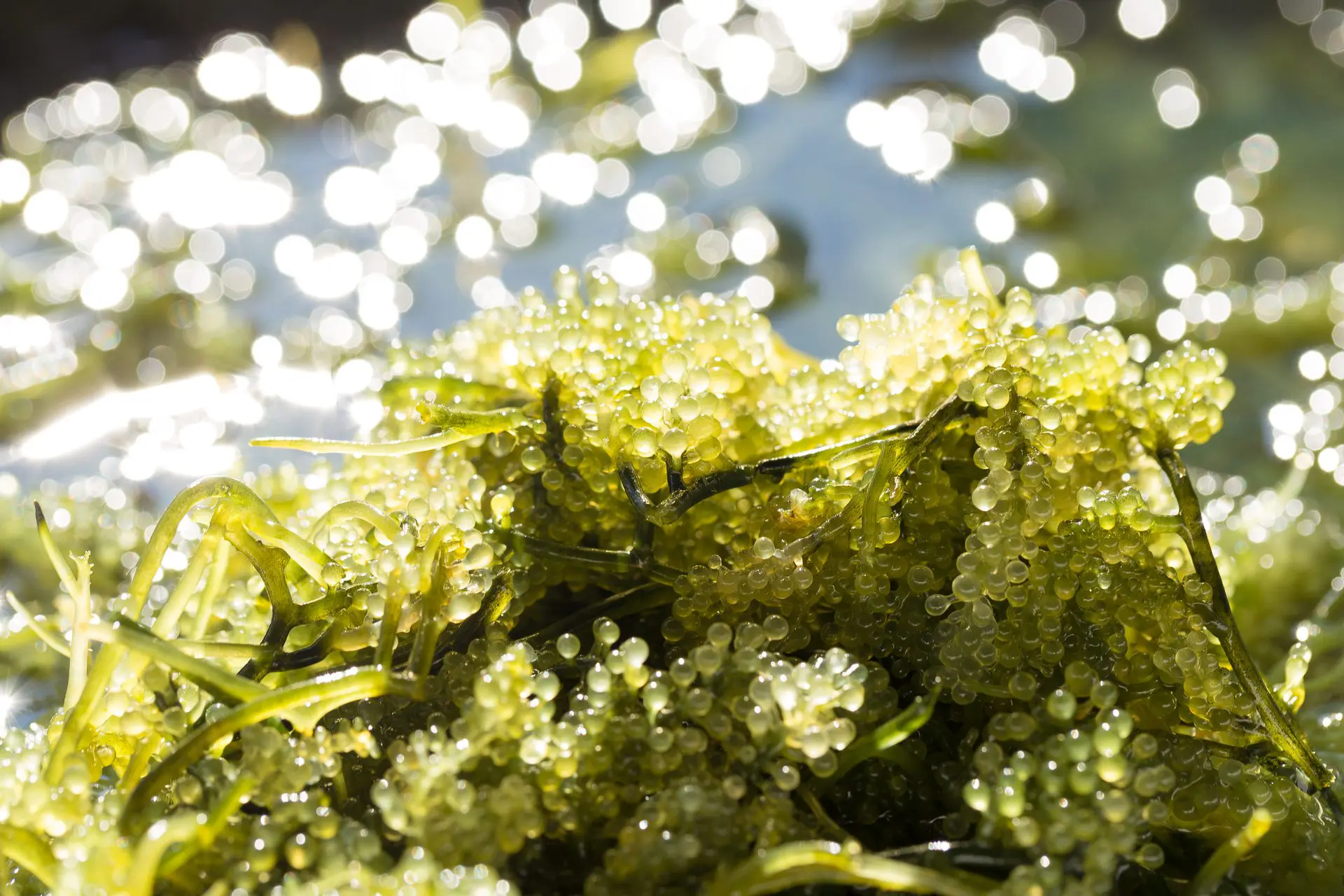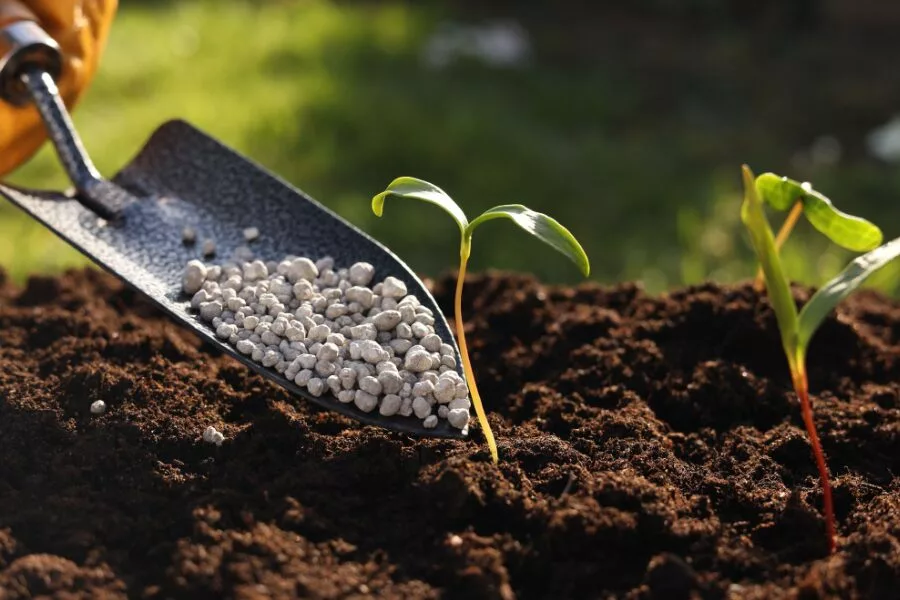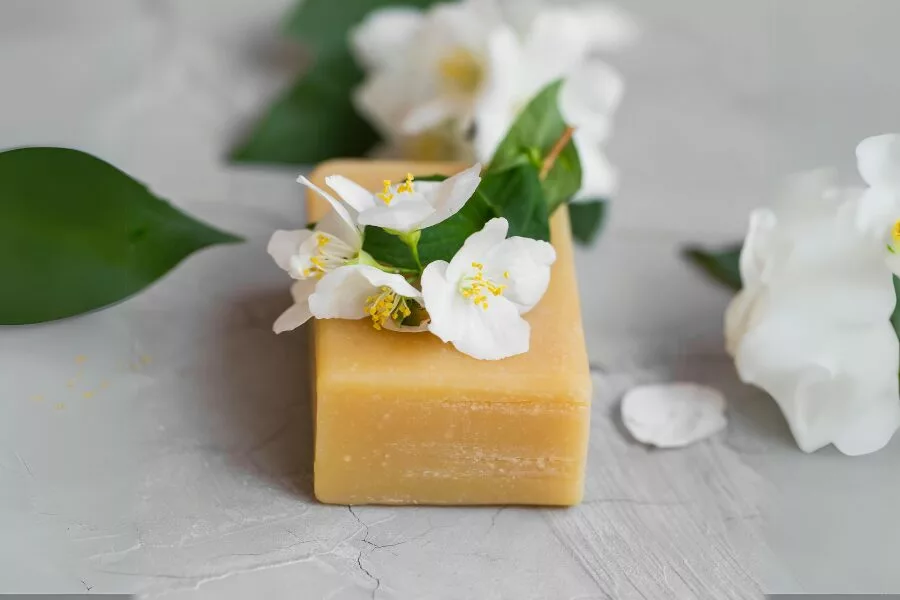Last Updated on August 8, 2024 by Our Editors
Ever wondered about the secret behind sea moss’s popularity and the incredible benefits it promises? Also known as Irish moss, this superfood has become a nutritional sensation for its potential health advantages. This marine wonder seems to have everything from boosting immunity to promoting skin health. But how does one go from ocean to gel? We’re here to delve into harnessing its goodness.
Harvesting sea moss and its benefits need to become the talk of the town. Let’s explore the art of harvesting, the intricacies of cleaning, and the simple steps to craft your own gel — a gateway to unlocking its manifold benefits.
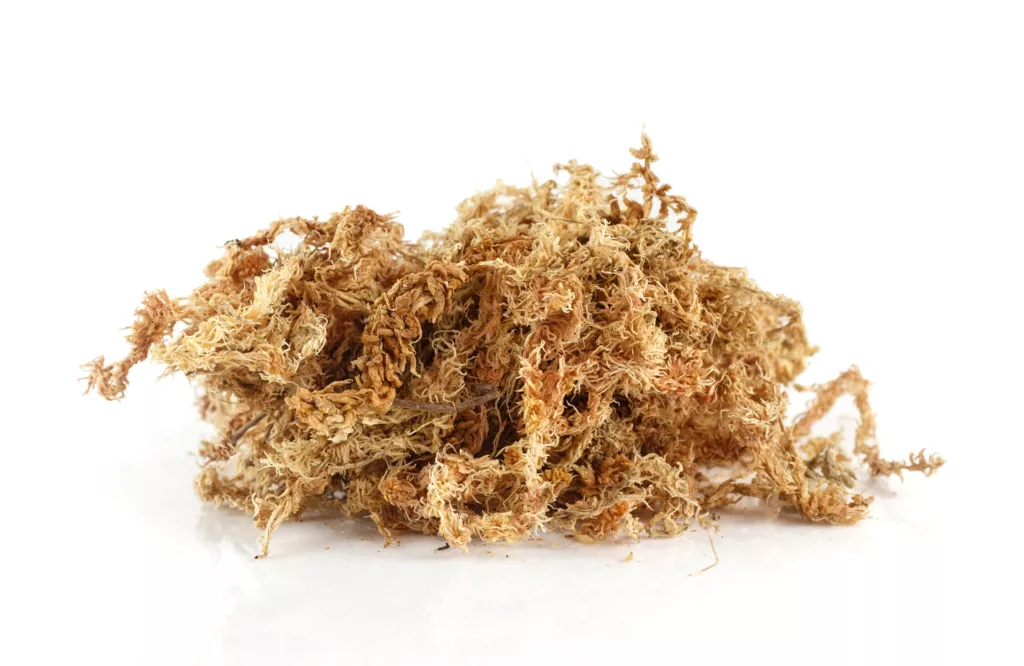
What is Sea Moss?
Sea moss, recognized by its aliases like Irish moss and red seaweed, emerges as a versatile marine botanical thriving in tidepools and tranquil inlets throughout the year. Its rich history extends across various cultures, where it has been cherished for its nutritional potency and multifaceted applications.
Found predominantly in regions like New England, this marine algae garners attention for its carrageenan content, a natural gelatinous carbohydrate extracted through careful harvesting. Carrageenan finds its way into various products, from baked goods to cosmetics, lending its unique texture and binding properties.
However, this marine wonder offers more than just industrial utility. With its nutritional profile brimming with vitamins, minerals, and antioxidants, it transcends beyond the manufacturing realm. Its edible form has enticed culinary enthusiasts, who explore its potential as a natural thickening agent in soups, stews, and beverages.
From the quaint tide pools where it thrives to the kitchens where its culinary possibilities are explored, this element presents an intriguing blend of natural wonder and practical versatility. As its reputation extends from traditional applications to contemporary culinary and wellness domains, delving into the depths of this superfood unravels a world of nutritional abundance and creative potential.
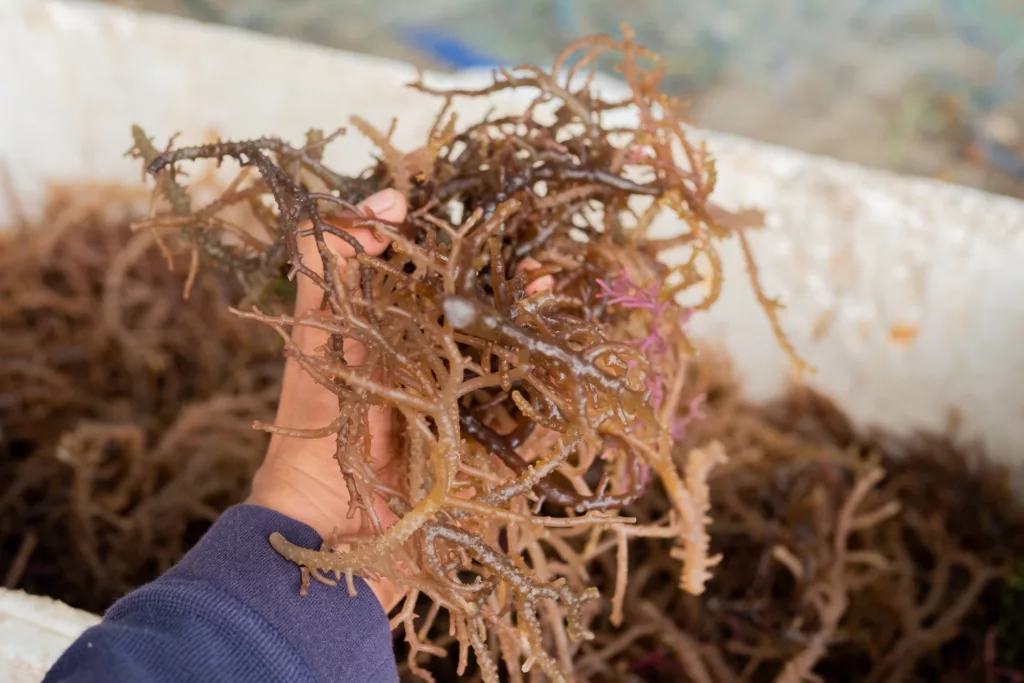
The Benefits of Sea Moss
Sea moss, Irish moss, or red seaweed offers a treasure trove of potential benefits from thyroid health to heart well-being. This marine marvel has captivated health enthusiasts for its nutritional prowess and versatile applications. Delve deeper into the world of this element and uncover its remarkable advantages with us.
Nutritional Profile
Sea moss boasts a remarkable nutritional composition, making it a sought-after addition to health-conscious diets. This marine botanical is rich in iodine, a vital micronutrient essential for optimal thyroid function. Live bacteria and fiber contribute to a thriving gut microbiome, fostering gut health and overall well-being. Additionally, its fiber content aids in weight management by promoting satiety and preventing overeating.
Health Benefits
With its exceptional nutritional profile, the benefits extend to curing diseases and providing immunity support, serving good health to its consumers.
Thyroid Support: Iodine is crucial for thyroid health, and sea moss offers a natural source of this essential micronutrient. Adequate iodine intake supports proper thyroid function, influencing metabolism and hormonal balance.
Immunity Enhancement: Emerging research suggests that this superfood may affect immune modulation. While studies are ongoing, there’s potential for this element to contribute to immune system support, bolstering the body’s defense mechanisms.
Gut Health Promotion: The fiber and live bacteria in the superfood contribute to a thriving gut microbiome. A balanced gut microbiome has various health benefits, including improved digestion and enhanced nutrient absorption.
Weight Management Aid: Sea moss contains fiber that can induce a feeling of fullness, aiding in weight management. Compounds like fucoxanthin have demonstrated the potential to promote fat metabolism, further contributing to weight loss efforts.
Heart Health: Research suggests that this superfood may contribute to heart health by reducing LDL (bad) cholesterol levels and acting as a blood thinner. These effects may help lower the risk of heart disease and promote cardiovascular well-being.
Blood Sugar Regulation: Compounds like fucoxanthin and alginate have shown promise in managing blood sugar levels. These compounds may assist in preventing blood sugar spikes and promoting stable glucose levels.
Fertility: While anecdotal evidence exists regarding the superfood’s potential role in fertility, scientific investigations are required to substantiate its effects on fertility in both men and women.
Role in Traditional Medicine
For centuries, sea moss has been an integral component of traditional medicine across various cultures, cherished for its therapeutic properties. Generally revered as a natural remedy, it has been used to address various health concerns. In ancient traditions, it was prized for its potential to alleviate respiratory ailments, soothe digestive discomfort, and boost overall vitality.
More contemporarily, scientific interest has burgeoned, examining its potential in treating cancer, diabetes, and other diseases. While modern research continues to unravel its precise mechanisms, the enduring legacy of this superfood in traditional medicine underscores its historical significance as a revered botanical ally for promoting health and well-being.
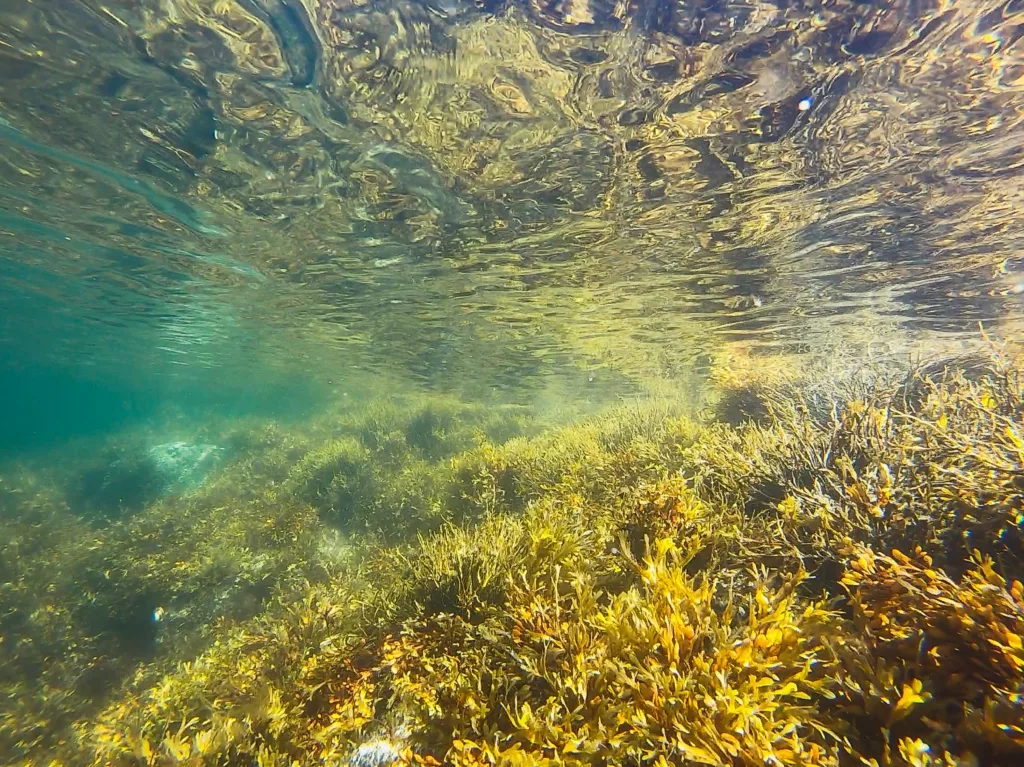
Harvesting Sea Moss: A Step-by-Step Guide
Harvesting goes beyond just visiting your nearest ocean sites. Whether you’re a harvester or a rookie, the art of sustainable sea moss harvesting embodies a profound connection with the aquatic ecosystem. Let’s see how!
Choosing the Right Location and Time
Selecting the optimal location and timing for harvesting is an intricate dance with nature’s rhythms, balancing the ebb and flow of tides with the changing seasons and lunar phases. Whether engaging in wildcrafting or ocean farming, choosing the right time and place involves a blend of observation, calculation, and planning.
Wildcrafters are attuned to low tide cycles, a window of opportunity when this prized seaweed becomes readily accessible. During this phase, the seaweed drapes itself along rocks or drifts gently in tide pools and inlets, offering a convenient moment for collection. This harmonious alignment between seaweed and low tide facilitates easy retrieval and reduces potential disruption to the delicate marine environment.
Conversely, ocean farmers take a more calculated approach, diving down to their cultivated beds once or twice a month. Meticulous planning is crucial, as tides fluctuate throughout the year, and moon phases influence their intensity. These factors influence the ideal time for harvesting, ensuring the moss is at its prime and ready to contribute its nutritional bounty.
Tidal charts emerge as invaluable tools to navigate these complex tides. These charts serve as navigational compasses, guiding harvesters by revealing the precise timing of low and high tides, accounting for seasonal and lunar variations. By harmonizing with the cyclical symphony of nature, those who seek to gather this seaweed ensure a sustainable and respectful interaction with the marine world, preserving its delicate equilibrium for generations to come.
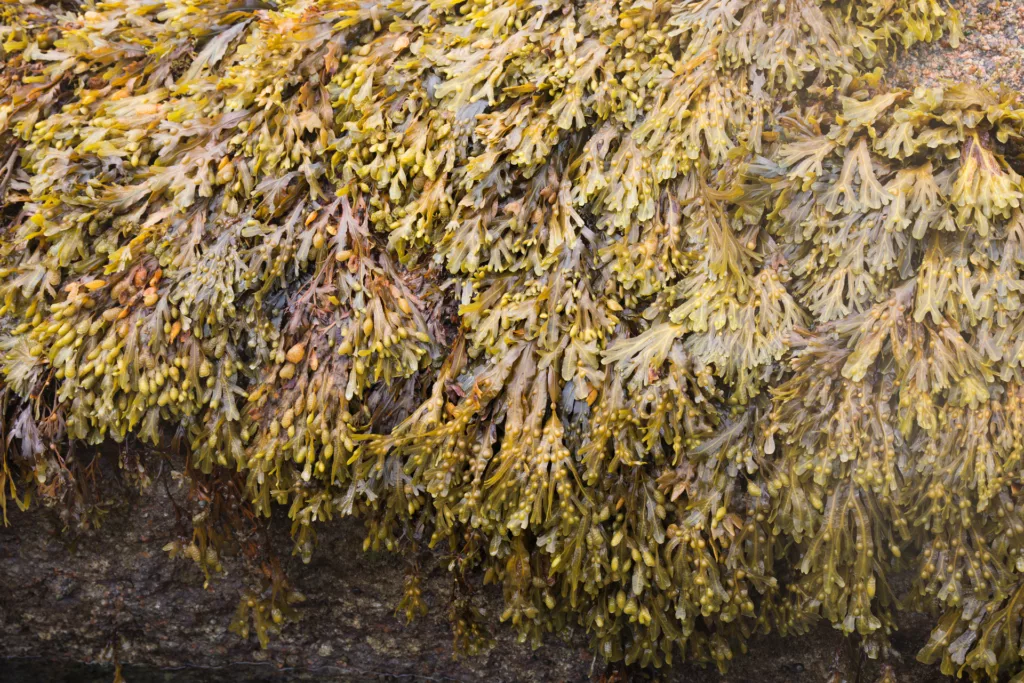
Tools and Equipment Needed
Harvesting sea moss from wild or cultivated farms necessitates specific tools and equipment tailored to the underwater environment. Depending on their method, collectors employ a range of essentials to ensure efficient and responsible harvesting.
For those gathering this seaweed in the wild, a sharp knife or scissors become indispensable companions, enabling careful detachment from rocks or trimming as required. Sturdy waterproof boots offer protection and traction, allowing collectors to venture into tide pools and gather their precious harvest without compromising safety. Large, durable bags serve as vessels for collection, accommodating the yield while preserving its freshness.
On the other hand, the moss’ farming demands a more intricate setup. Divers play a pivotal role in this method, equipped with the skills to navigate the depths and retrieve seaweed clusters growing near the ocean floor. This endeavor may necessitate specialized diving gear, including wetsuits, masks, and oxygen tanks, to ensure the safety and efficiency of the harvesting process.
Sustainable Harvesting Practices
Sea moss can regenerate swiftly, offering a sustainable food source while minimizing adverse impacts on its marine habitat. Responsible harvesters prioritize methods that respect this natural rhythm by recognizing this potential.
Vertical ocean farming systems are pioneering innovative approaches, enabling controlled cultivation in saltwater environments. These systems are designed to meet growing consumer demands efficiently while minimizing strain on wild populations and fostering ecological harmony.
In parallel, wildcrafting exemplifies a profound commitment to sustainability. As rooted in leaving a minimal footprint, wildcrafting involves harvesting this seaweed in its natural habitat, prioritizing the well-being of both plants and their cohabitants. While meeting human needs, this approach acknowledges its integral role in supporting various marine organisms that rely on it as sustenance. By thoughtfully gauging the balance between harvest and nature’s needs, wildcrafting ensures the preservation of this seaweed as a vital resource for future generations.
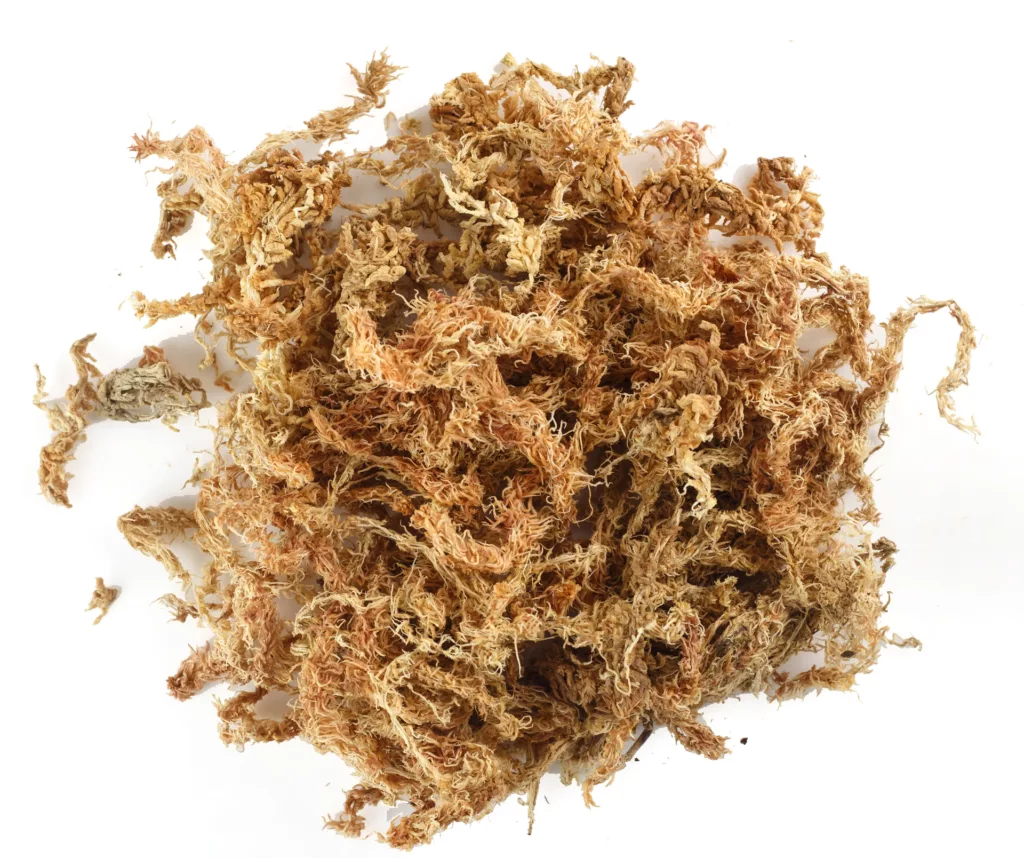
Cleaning and Preparing Sea Moss
Cleaning sea moss is a simple process. Generally, it can be cleaned with or without using lime. We’ll look at both processes.
Cleaning Sea Moss Without Lime
Follow these straightforward steps to cleanse this superfood and unlock its full potential.
Remove Visible Debris: Begin by carefully inspecting the dried seaweed. Use your fingers or tweezers to gently eliminate e any visible impurities such as dirt, small stones, or seaweed fragments. This meticulous process paves the way for a thorough cleaning.
Soak for Revitalization: Place the seaweed in a sizable bowl and cover it completely with cold water. Allow it to soak for 4-6 hours or until it swells and softens. This revitalizing soak enhances its texture but also aids in dislodging any lingering dirt, sand, or salt.
Thorough Rinsing: Drain the water and rinse it meticulously under cold running water after the soak. Employ a gentle massaging motion to encourage the removal of any residual impurities. Repeat this rinsing process until the water runs clear, ensuring it is pristine and contaminant-free.
Want to read more like this?
Get similar stories and a free sustainability checklist delivered to your inbox.

Like our content?
Get similar stories and a free sustainability checklist delivered to your inbox.

Cleaning Sea Moss Using Lime
There’s one additional step when cleaning with lime, while following the same procedure given above.
Standard Cleaning Foundation: Begin by following the initial cleaning steps outlined above. Thoroughly remove visible debris, execute the revitalizing soak, and ensure a meticulous rinsing process.
Lime-Infused Soaking: Return the seaweed to the bowl once it has undergone its initial soak and rinse. Cover it with cold water and introduce the cleansing power of Lime. Squeeze the juice of 1-2 limes into the water, adjusting the quantity based on your batch size. Allow it to luxuriate in this lime-infused water for 30 minutes. Lime’s disinfectant properties join forces with the seaweed, fostering an environment of immaculate purity while imparting a delightful, citrusy aroma.
Final Rinse for Brilliance: Following the lime-infused soak, drain the water and embark on a final rinsing ritual under cold running water. This conclusive rinse eliminates lingering lime residues, leaving your seaweed pristine and invigorated.
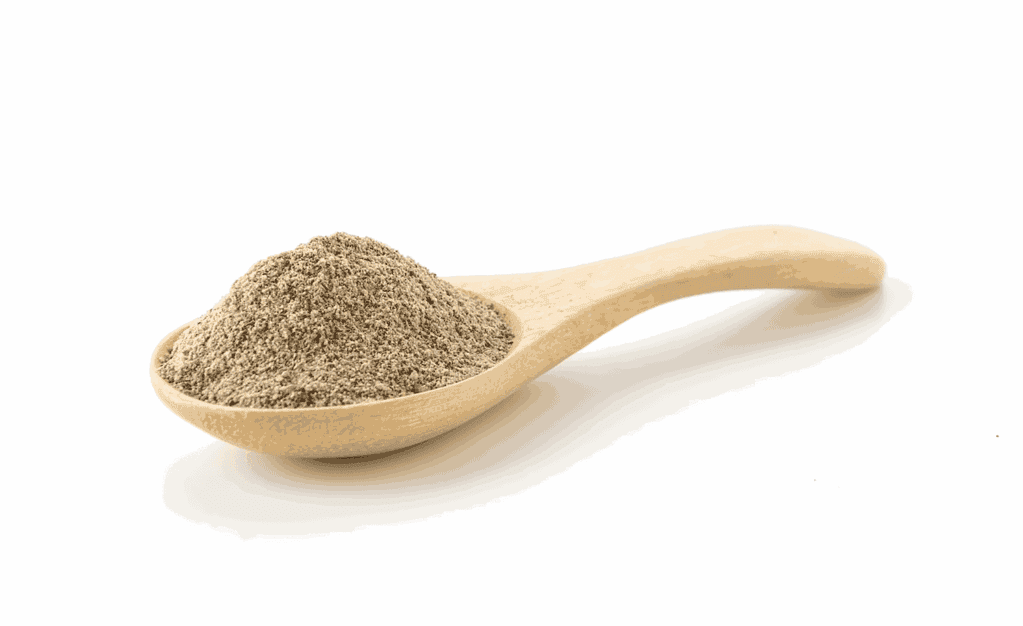
Tips for Ensuring Maximum Nutrient Retention
Maintaining its maximum nutrient content is paramount as you clean and prepare your seaweed. Here are some valuable tips to ensure the retention of its nutritional integrity.
Gentle Soaking
Embrace the gentle art of soaking sea moss. Opt for a 12-24 hour soak to allow the seaweed to rehydrate fully. This extended duration promotes the restoration of its natural texture and suppleness without subjecting it to unnecessary heat or intense processing.
Choice of Water
The water quality used for profound soaking impacts the sea moss’s nutrition retention. Prioritize filtered, alkaline, or spring water to provide a nurturing environment. These options preserve its innate nutrients without introducing contaminants or altering its intrinsic composition.
Room Temperature Soak
While the seaweed rehydrates, let it rest at room temperature. Avoid refrigerating it during soaking, as this may disrupt its nutrient profile. Allowing it to soak at a moderate temperature ensures a gradual and gentle reconstitution, preserving its valuable nutritional elements.
Minimal Heat Exposure
When transitioning to the preparation phase, tread lightly on using heat. Boiling sea moss is common, but if optimal nutrition retention is your goal, consider embracing raw soaking. This approach safeguards its nutrient-rich essence, ensuring that you harness its full potential to nourish your body.
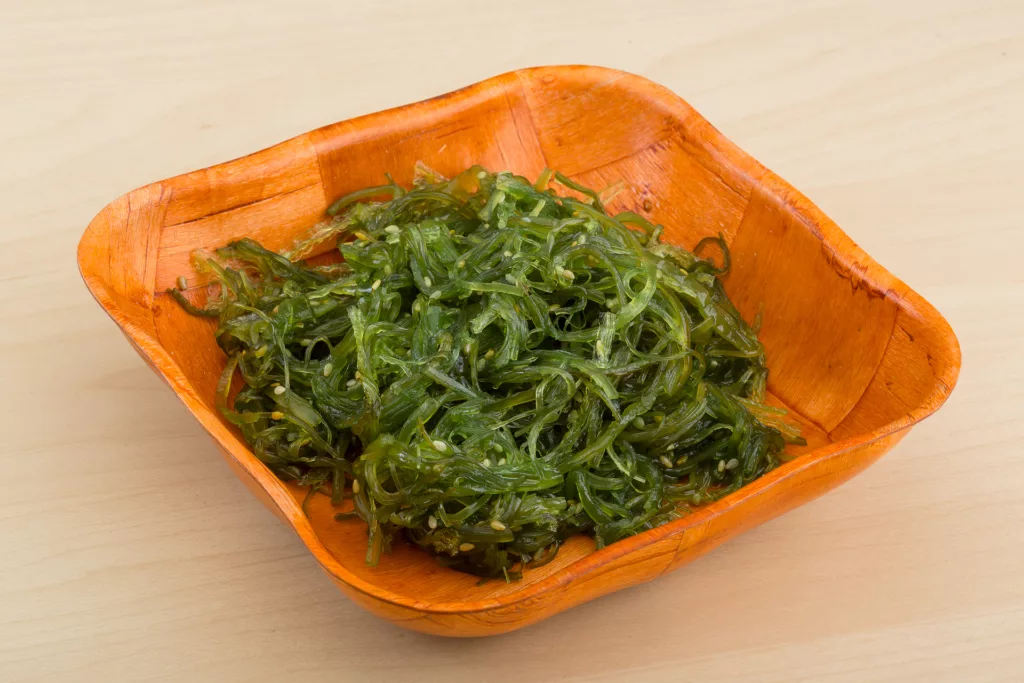
Making Your Own Sea Moss Gel
Crafting homemade sea moss gel is a delightful culinary adventure that elevates your dishes with natural goodness. Follow these simple steps to transform your soaked seaweed into a velvety gel brimming with nutrients:
Ingredients and Tools
- Soaked Sea Moss: Retrieve your soaked seaweed, which you’ve allowed to rehydrate over 12-24 hours.
- High-Powered Blender: A reliable blender is your partner in creating a smooth and consistent gel.
- Water: The water used for soaking holds a treasure trove of nutrients and will be the base of your gel. If the soaking water is clear and debris-free, use it. Otherwise, opt for fresh spring or alkaline water.
Step-by-Step Process
- Drain and Prepare: Carefully remove the soaked sea moss from its liquid and place it on a clean, dry plate. Reserve the soaking water, as it holds valuable nutrients.
- Blending Magic: Place the sea moss in the high-powered blender and add 1 cup of the reserved soaking water. Adjust the water quantity based on your desired gel consistency. Blend the mixture until it transforms into a velvety, smooth texture. This process typically takes around 1-3 minutes.
- Airtight Elegance: Transfer the freshly blended sea moss gel into an airtight container or mason jar. Seal it securely to preserve its lush texture and nutritional potency.
Sea Moss Gel Storage
- Refrigeration: Place the airtight container of sea moss gel in the refrigerator. The gel will naturally thicken over 2 hours, achieving the desired consistency.
- Shelf Life: Your homemade sea moss gel can thrive in the refrigerator for up to 1 month, maintaining its freshness and nutrient content.
- Freezer Option: For extended storage, consider freezing the sea moss gel. It remains viable in the freezer for up to 3 months. Alternatively, pour the gel into an ice-cube tray, creating convenient portions for your future smoothies.

A Popular Sea Moss Recipe
Sea moss recipes give your everyday diet a delicious touch. With exceptional sea moss nutrition, let’s explore an easy-to-make recipe at home.
Sea Moss Gel Smoothie
Ingredients You’ll Need:
- Soaked Sea Moss: Retrieve your soaked sea moss, ready to infuse your smoothie with its nutrient-rich essence.
- Non-Dairy Milk: Choose non-dairy milk, such as almond, coconut, oat, or cashew, to add creaminess.
- Frozen Fruit: Gather some frozen fruits, preferably berries, mangoes, or bananas, for sweetness and thickened texture.
- Natural Sweetener (Optional): Add a touch of natural sweetener – honey, maple syrup – to enhance the taste.
How to Blend:
- Combine the Essentials: In a high-powered blender, add the soaked sea moss, non-dairy milk, and a generous handful of frozen fruit.
- Customize Consistency: To achieve your preferred smoothie texture, fine-tune the proportions. For creaminess, increase the non-dairy milk. For thickness, introduce additional frozen fruit.
- Sweeten Thoughtfully: If you want sweetness, add your chosen natural sweetener.
- Blend to Perfection: Secure the blender lid and blend on high until your ingredients unite harmoniously, transforming into a luscious sea moss smoothie. Depending on your blender’s power, this typically takes 1-2 minutes.
Sea Moss as a Natural Thickening Agent
Renowned for its thickening prowess, sea moss has graced kitchens across the globe, enriching dishes with its versatile charm. At the heart of this botanical wonder lies carrageenan, a natural thickener that lends itself harmoniously to a spectrum of gastronomic creations.
Carrageenan, the secret behind sea moss’s thickening magic, is a polysaccharide compound found abundantly within this marine gem. When introduced to liquids, carrageenan’s molecular structure forms a gel-like matrix, imbuing dishes with a luscious consistency and enhancing mouthfeel. This remarkable quality makes sea moss an invaluable addition to soups, stews, gravies, and sauces, where its thickening prowess not only elevates texture but also amplifies the flavor profile.
In the culinary realm, sea moss’s legacy thrives through its ability to integrate with various recipes seamlessly. From hearty chowders to aromatic curries, the natural combination between sea moss and carrageenan enriches culinary experiences while staying true to the ingredients’ innate integrity.
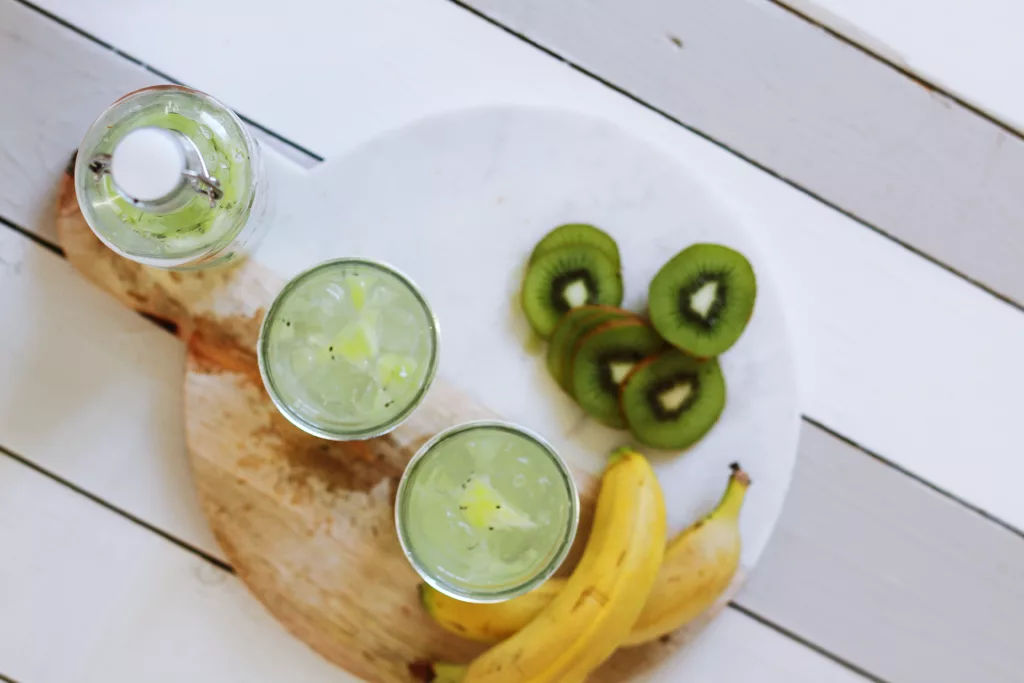
Sea Moss Skincare Recipes
With numerous sea moss varieties, you can also use them for your skincare. From applying gel to making facemasks, sea moss gives your skincare routine an eco-friendly and healthy touch.
Sea Moss, Turmeric, and Honey Mask
Crafting this revitalizing mask is a simple yet indulgent ritual: meld two teaspoons of sea moss gel with a teaspoon of honey and 1/4 teaspoon of turmeric powder in a clean pot. Gently warm this harmonious concoction on the lowest heat, ensuring a delicate fusion of ingredients. As the mask’s soothing warmth envelops your skin, its nurturing touch aids in opening pores, inviting the potent amalgamation of sea moss, honey, and turmeric to work their magic. With each application, allow this divine elixir to grace your skin for 20 minutes, unveiling a luminous glow that reflects the harmonious blend of nature’s finest elements.

Celebrities Promoting Sea Moss
The process can be easily followed at home, from sea moss cultivation to its cleaning. Many celebrities employ sea moss in their daily lives and derive many benefits. Here’s a list:
Kim Kardashian
Kim Kardashian, the influential TV reality star, has embraced sea moss as a daily diet. Sharing her plant-based breakfast on Instagram, Kardashian’s sea moss smoothie has caught attention. Sea moss, red algae with potential health benefits, including vitamins, antioxidants, and minerals, aligns with Kardashian’s health goals.
Winnie Harlow
Winnie Harlow’s Cay Skin offers a range of products, including the popular Isle Glow Face Moisturizer SPF 45, which seamlessly blends into various skin tones while providing antioxidant-rich protection. As it is formulated with niacinamide and sea moss, the moisturizer delivers a luminous glow, reflecting Harlow’s commitment to creating products that cater to diverse beauty and skincare needs.
Tia Mowry
Tia Mowry, the beloved actress and former star of “Sister, Sister,” has ventured into the world of hair care with her brand 4U by Tia Mowry. Sea moss is among the nourishing ingredients featured in her collection, reflecting her commitment to offering holistic solutions for hair care. With a focus on supporting locks and addressing common hair concerns, Tia Mowry’s incorporation of sea moss underscores her dedication to crafting products that promote healthy and vibrant hair.
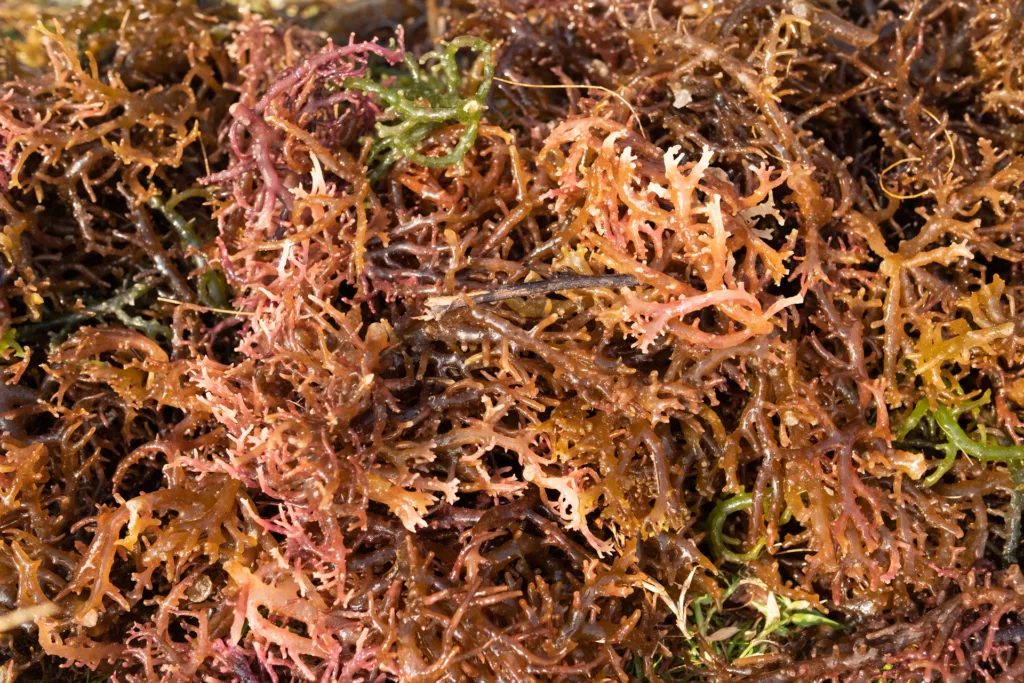
FAQs
How many times should sea moss be consumed?
Limit your consumption of sea moss to one serving per day, as it contains iodine, and excessive intake can result in an enlarged thyroid gland, known as a goiter.
When should one avoid eating sea moss?
Generally, you should avoid sea moss if you have a high heavy-metal load, are pregnant, are on blood thinners, or have a shellfish allergy.
What are the various nutrients present in sea moss?
Sea moss boasts a rich content of essential vitamins such as A, C, E, and B6, along with valuable minerals, including zinc and selenium, making it a notable source of these vital nutrients.
Is sea moss good for the kidney?
Sea moss is abundant in iodine, which has been recognized for its potential to prevent the formation of kidney stones. Moreover, anti-inflammatory properties in sea moss offer potential benefits in reducing the likelihood of kidney disease.
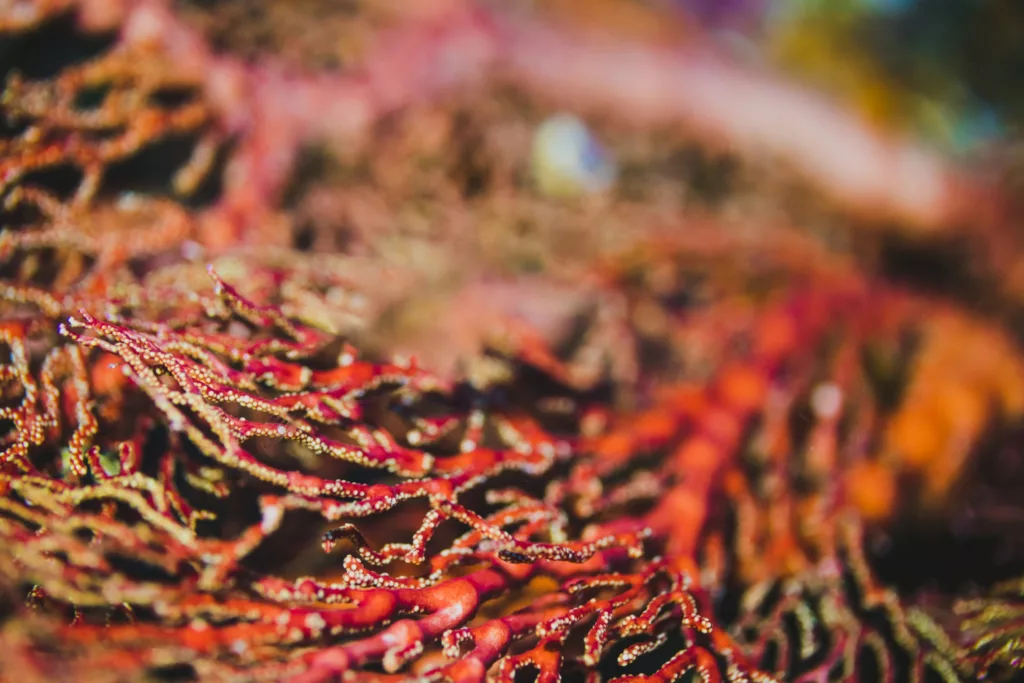
Conclusion
In a world of discoveries, sea moss emerges as a captivating marine wonder from the ocean depths to our everyday lives. Its journey from harvesting to preparation unfolds an exceptional showcase of sustainable practices, nutritional benefits, and creative culinary possibilities. With celebrities like Kim Kardashian, Winnie Harlow, and Tia Mowry embracing its potential, sea moss has gained widespread recognition for its contributions to health, beauty, and vitality.
Let’s support nature and its bounty! Shop for more nutritious superfoods right here at our sustainable, eco-friendly store.
Want to read more like this?
Get similar stories and a free sustainability checklist delivered to your inbox.

Like our content?
Get similar stories and a free sustainability checklist delivered to your inbox.


